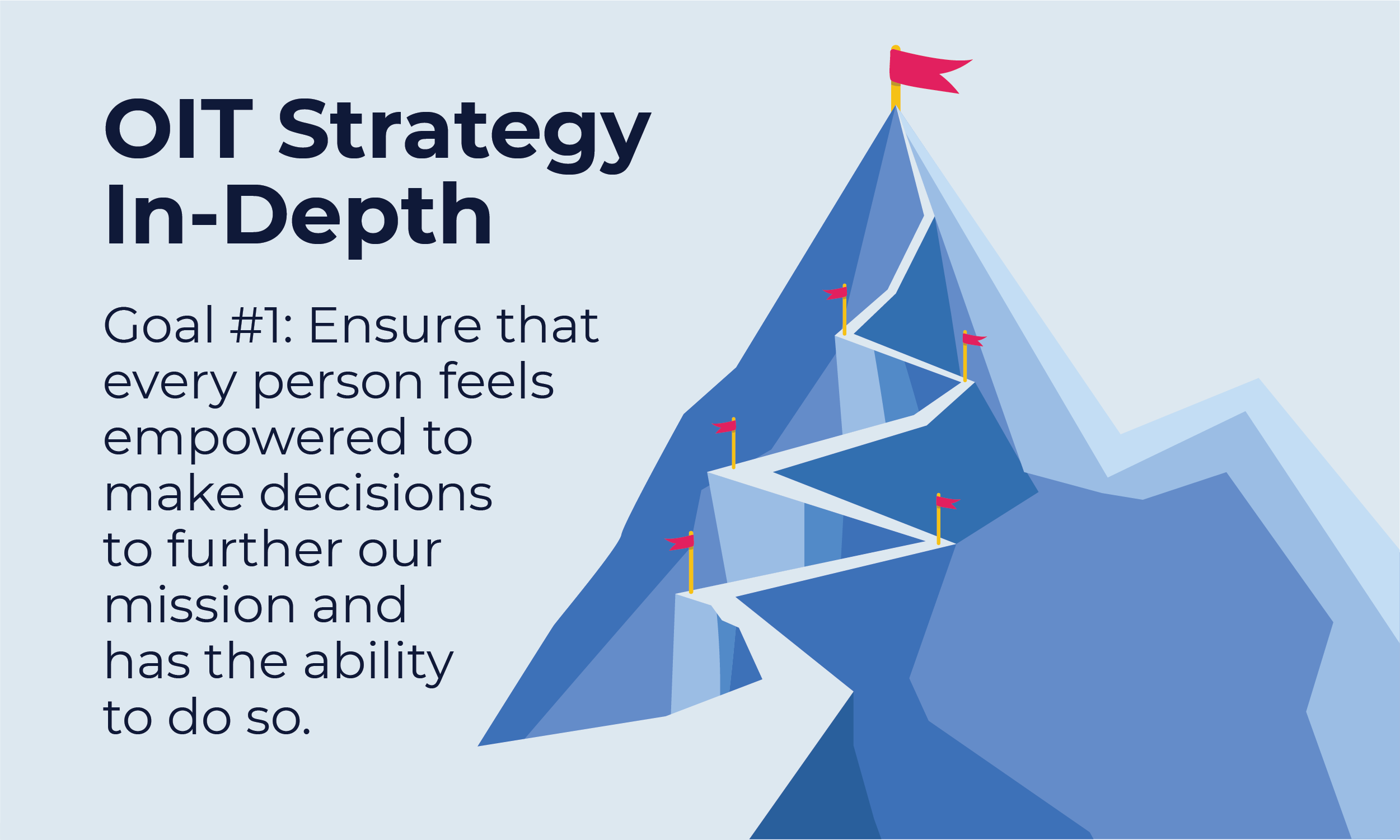Power to the People: OIT's Strategic Goals Hinge on Empowering Staff

With the conclusion of Super Bowl XLVII, football season might be over, but the words of legendary Green Bay Packers coach Vince Lombardi reverberate loud as ever.
He once said, “Individual commitment to a group effort – that is what makes a team work, a company work, a society work, a civilization work.”
He could have added that it makes an Office of Information Technology work. After all, OIT is a team. When individuals perform better, the team performs better. Every employee plays a vital role in the success of our organization, and all of those roles are interconnected.
“If you talk to any one of us in the Front Office,” said OIT Director and Chief Information Officer Rajiv Uppal at the January 25 All Staff Meeting, “we want to make sure we are doing everything possible so you feel empowered, you feel that we listen to you so that you are able to deliver what you need.”
He was describing the first of OIT’s five strategic goals: “Ensure that every person feels empowered to make decisions to further our mission and has the ability to do so.”
It’s no accident that this cornerstone goal focuses on people rather than technology. When our people are in a position to succeed, they can apply the technological solutions that beneficiaries, providers, and all of our stakeholders depend upon. The goal is to put staff in such a position by distributing responsibility, supporting continual learning, and fostering productive working relationships.
OIT Deputy Director and Deputy CIO George Hoffmann says, “We want to bring decision-making to where the knowledge is. Let’s hand the keys to those most knowledgeable about each area of our business.”
To give employees greater ability to excel in their careers and a greater voice in plotting OIT’s path forward, the office has implemented a number of people-centric initiatives. They include, but are not limited to, the following:
- Improving DEI: The DEI Coalition, founded in 2020, works to create a culture within OIT where everyone feels heard, seen, and valued. Originally a series of listening sessions, the Coalition now organizes regular events, including biweekly meetings and a book club. The Coalition aims to improve culture and processes at OIT while raising consciousness about DEI issues. In 2021, OIT built on this momentum by formally drafting a DEI strategy.
“When we ‘feel seen,’ have a sense of belonging, and have full access to tools and inclusive information, we can all bring our whole selves to work and, ultimately, better serve our customers, each other, and our mission,” says Antoinette (AJ) Johnson, Director of the Division of Investment Oversight and Governance.
Uppal adds, “When I talk about a frictionless workplace, I am referring to a reduction in administrative and technological burdens, but more importantly, I am also referring to frictionless relationships. An inclusive workplace is one where employees can grow strong bonds with one another and work together more seamlessly.”
- Building a Model Workforce Resilience (WR) Program: WR is critical to the OIT guiding principles of providing a best-in-class employee experience and creating a frictionless customer experience. WR ensures employees opportunities to learn new skills in several different areas such as product management and cybersecurity. Such professional development will help everyone at OIT to grow their careers, maximize their potential, and provide better solutions to customers. A focus on Human-Centered Design ensures that customer needs are met, whether that “customer” is a beneficiary, a colleague in OIT, or anyone at all who is impacted by our products and services.
The modular design of WR allows OIT staff to choose a level of depth that fits their needs and a pace of learning that fits their schedule. Workforce Resilience Program Manager Melissa Cohen explains, “The Workforce Resilience Program is designed for the CMS employee to choose their own learning journey while arming them with the skills to make decisions on the programs they support. The learning tracks are designed to foster a collaborative environment where employees can learn and grow from one another.”
At the January All Staff, Uppal said that in 2022, “We had a goal of having at least 50 percent of our staff go through the Workforce Resilience program. Actually, that happened. That’s an amazing accomplishment.” It’s a testament to the growth mindset of OIT employees, one that leadership will continue to cultivate with an increased offering of courses.
- Enabling Engagement Between Staff, Leadership, and Customers: OIT is in the midst of an ongoing cultural assessment journey so that it can continue to adopt healthy workplace practices for fostering better communication, collaboration, and interaction. Rather than following a top-down approach, this journey is based on feedback loops that encourage dialogues and idea sharing. Whether via Slack, employee feedback surveys, PlanetOIT, open panel discussions, or facilitated activities like the Culture Co-Lab, you can play a role in advancing OIT’s culture.
"We're committed to discovering the best methods of supporting our people so that they can be the best versions of themselves,” Hoffmann says. “That's our shared vision for the continuous journey of evolving OIT into an Agile, value-driven, cutting-edge organization.”

